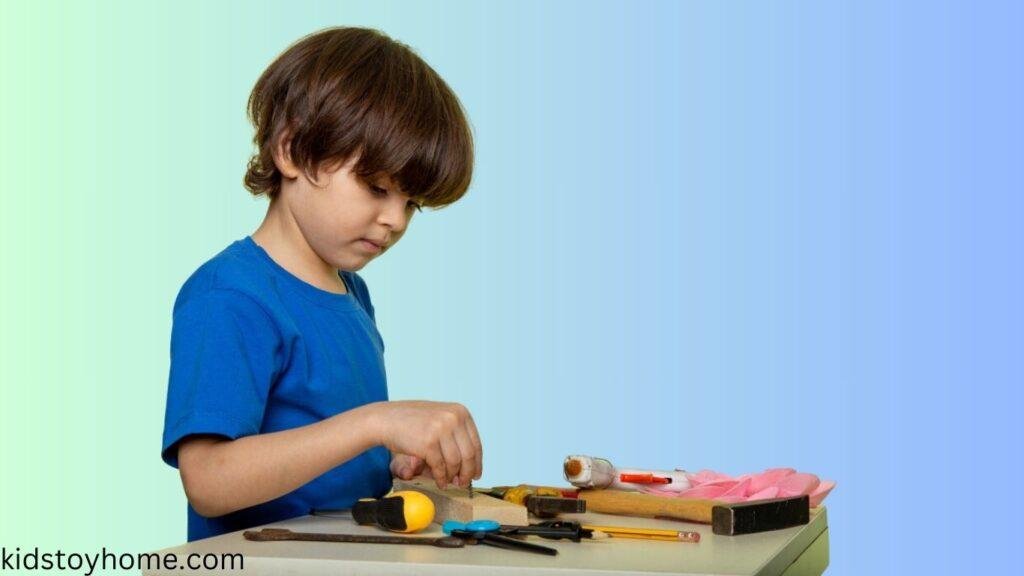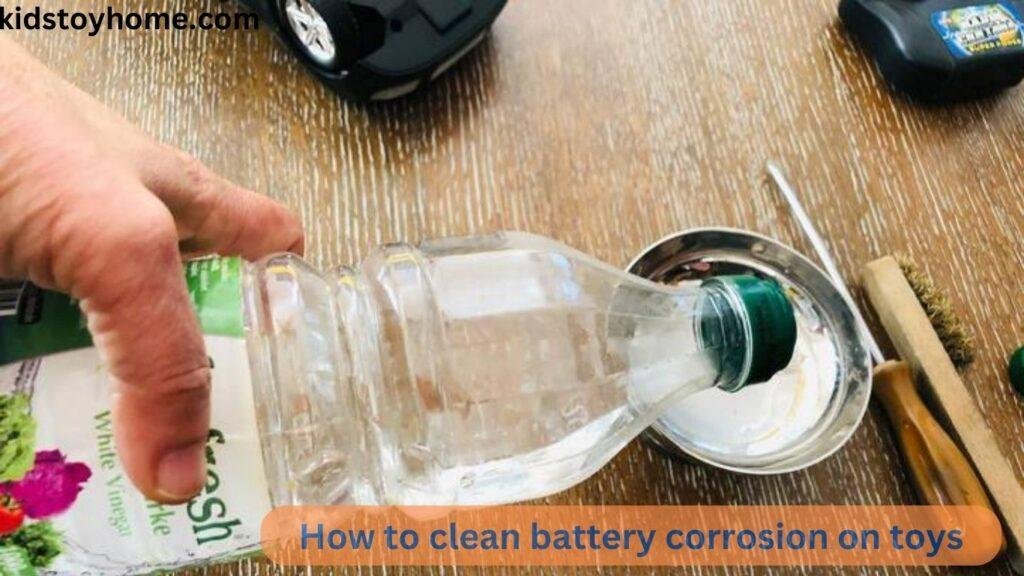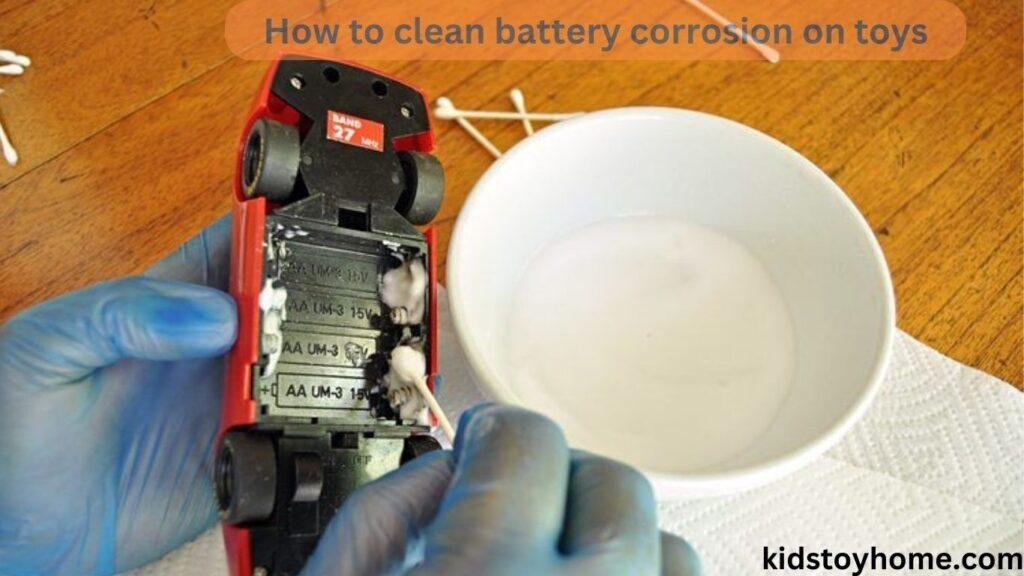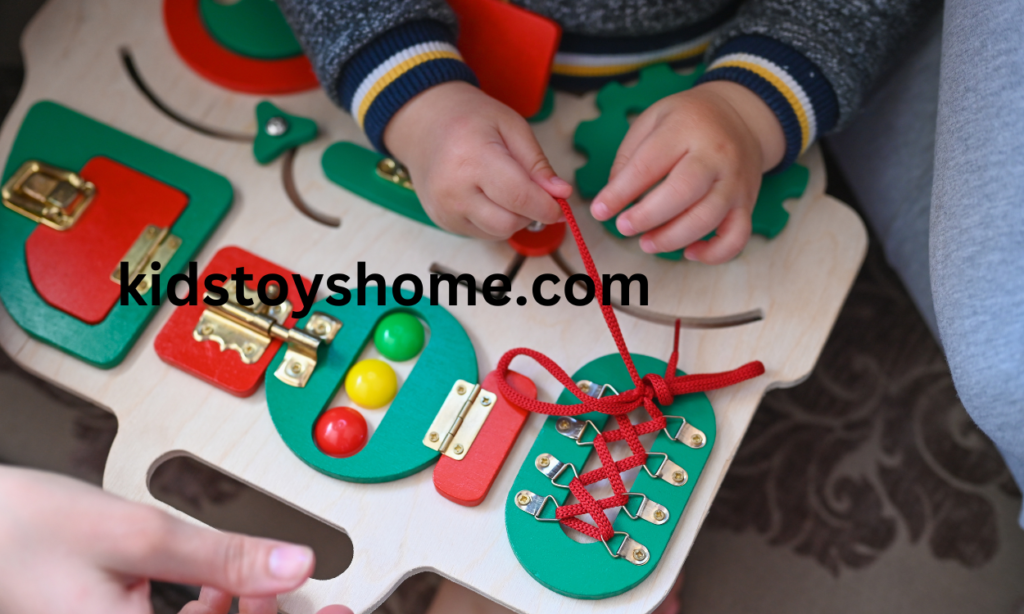
If you’ve ever had a beloved toy corroded by battery leakage, you know how devastating it can be.
Battery corrosion is a common problem for parents, kids, and adults alike – it damages our favorite things and poses serious health risks if mishandled. Fortunately, there are steps we can take to clean up the mess safely and effectively.
In this blog post, we’ll explain the causes of toy battery corrosion and provide detailed instructions on “how to clean battery corrosion on toys?” neutralizing and removing the residue without further damaging your beloved items.
So keep reading to learn more about this tricky issue – you can protect your precious belongings from corrosive destruction with proactive maintenance!
Table of Contents
ToggleWhat is Battery Corrosion?
Battery corrosion typically occurs when a battery leaks, releasing a potassium carbonate build-up. This compound, though harmless in small quantities, is highly corrosive and can wreak havoc on the metal components of your toys. The leakage usually happens when batteries are left inside toys for an extended period or when exposed to high temperatures.
The resulting Corrosion appears as a white or blue powdery substance on the battery terminals. If left untreated, this corrosive substance can damage your toy, leading to complete functional failure. Furthermore, mishandling the corroded battery could lead to burns or eye injuries, highlighting the importance of dealing with this issue with utmost care.

What are some common signs that your toy’s battery terminals need cleaning?
Several telltale signs indicate that your toy’s battery terminals may need cleaning. The most obvious sign is a white or blue powdery substance on the battery terminals. This is the Corrosion caused by battery leakage. Other symptoms include a toy not working despite having new batteries or the batteries not fitting correctly into their designated slots.
In some instances, you might notice an odd or pungent smell coming from the battery compartment, suggesting that the batteries have begun leaking. It’s critical to address these signs as soon as they appear to prevent further damage to your toys.
Why it’s Important to Clean Battery Corrosion on Toys?
Cleaning battery corrosion on toys is not merely about salvaging a favorite plaything. Still, it is also a matter of health and safety. Corrosion can degrade the toy’s performance, render it useless, or cause it to malfunction unpredictably. Furthermore, the chemicals involved in the corrosion process can be hazardous if they come into contact with skin or eyes or if a child accidentally ingests them.
Therefore, regular inspection and prompt cleaning can prevent unwanted accidents and prolong the toy’s life. Taking appropriate preventive measures ensures that toys remain safe and enjoyable for kids and that cherished toys can last for generations, creating beautiful memories.
Identify What Type of Battery is Used in the Toy
Before proceeding with the cleaning process, it’s crucial to identify the type of battery used in the toy.
Common types include alkaline, lithium, nickel-cadmium, and zinc-carbon batteries, each with distinct chemical compositions.
This information is usually labeled on the battery and is integral to determining the most suitable cleaning method. Incorrect cleaning solutions can exacerbate the Corrosion or cause further damage to the toy.
Hence, proper identification is a critical first step in addressing battery corrosion issues.
Alkaline Batteries vs Lead-Acid Batteries vs Rechargeable Batteries vs Household Batteries
Different types of batteries are often used in toys, and it’s crucial to know which ones are in your toys to deal with potential Corrosion effectively.
Alkaline batteries are one of the most common types used in toys. They are inexpensive and offer an excellent power-to-cost ratio. However, they are prone to leaking potassium hydroxide, a caustic agent that can cause respiratory, eye, and skin irritations.
Lead-acidic batteries are usually found in more giant motorized toys like ride-on cars. While they don’t leak as frequently as alkaline batteries, they can still corrode and produce harmful sulfuric acid.
Rechargeable batteries such as nickel-cadmium (NiCd) or Nickel-Metal Hydride (NiMH) are increasingly popular due to their long-term cost-effectiveness and environmental friendliness. However, they can still leak, and the chemicals can be harmful.
Lastly, household batteries, such as lithium or zinc-carbon batteries, may also be used in some toys. Lithium batteries rarely leak but can cause a fire if they do, while zinc-carbon batteries leak more often but are less destructive.
Knowing the type of battery used in your toy can help determine the best methods for cleaning and preventing Corrosion.
Safety Considerations
Before you begin the cleaning process, it’s vital to underscore the importance of safety. Battery corrosion harms toys and can pose health risks if not handled properly. Therefore, before initiating the cleanup, ensure:
Wearing Protective Gloves and Eye Protection
When cleaning battery corrosion, wearing protective gloves and eye protection is imperative. The leaky battery residue is usually a form of potassium hydroxide, a caustic substance capable of causing burns and eye injuries. You can avoid direct contact with this hazardous material by donning appropriate gloves and safety glasses, thereby mitigating the risk of injury.
Keeping Children Away from the Area
Given the potential risks associated with battery corrosion, keeping children away from the area during the cleanup process is best. The intriguing sight of a disassembled toy or the colorful residue might attract their curiosity, putting them at risk of exposure to harmful substances. You can effectively eliminate the risk of accidental ingestion or contact by ensuring a safe distance.
Avoiding Ingestion of Chemicals or Contact with Skin and Eyes
Avoiding ingestion of chemicals or contact with skin and eyes is paramount when handling battery corrosion. If any corrosive substance comes into contact with the skin, rinse immediately with plenty of water and seek medical advice if necessary. In case of eye contact, rinse cautiously with water for several minutes and consult a doctor without delay. Never touch your face or eat food without washing your hands thoroughly after cleaning up battery corrosion.
Identifying Battery Compartments
Identifying battery compartments might seem straightforward, but it’s an essential step. Battery compartments are usually designed to be secure and childproof, so they can be tricky to open, especially if they are corrupted. Use a screwdriver or a similar tool to open the compartment carefully, ensuring not to force it open as this could lead to further damage. Once the container is opened, remove the batteries and assess the degree of Corrosion before proceeding with the cleanup.
Gather Supplies and Tools Needed for Cleaning
Before beginning the cleanup, it is necessary to gather some basic supplies. The tools required may vary depending on the severity of the Corrosion and the type of toy involved. However, a few everyday items are likely required in most cases.
White Vinegar
White vinegar is a commonly used household item that effectively neutralizes battery corrosion. Its acidic property can counteract the base nature of the Corrosion, making it easy to wipe off.
Lemon Juice
Lemon juice, like vinegar, is an acid that can neutralize battery leakage. It is a handy alternative if vinegar is not available. However, its more pungent scent may linger on the toy, so there might be other choices for sensitive noses.
Baking Soda
Baking soda is a base that neutralizes the acid from some types of battery leakage, especially from acid-based batteries. Mix it with water to create a paste that can be applied to the corroded areas.
Water
Water is essential for cleaning up battery corrosion and should be kept handy during the process.
Paper Towels or a Clean Cloth
Paper towels or a clean cloth are essential for wiping down the corroded areas after applying the cleaning solution and for general cleanup.
Toothbrush
Using a soft-bristled toothbrush can help scrub away the residue. Using only a clean toothbrush and keeping it away from other objects for hygiene is essential.
Cotton Swab or Pencil Eraser
A cotton swab or pencil eraser can reach and clean tight spots in the toy where fingers can’t fit. They are convenient for delicate or intricate toys where precision is necessary.
Where to Purchase Supplies if Not Readily Available at Home
If these supplies are not readily available at home, they can be easily procured from local supermarkets or online marketplaces like Amazon, eBay, or Walmart.
Other Safety Equipment Needed (e.g. Face Mask)
Apart from the gloves and safety goggles mentioned earlier, a face mask may also be needed, especially when dealing with extensive Corrosion or when the cleaning process could create dust or aerosols. A simple surgical or homemade cloth mask should suffice for this purpose. However, it’s crucial to remember that masks should be used with other safety measures, not as a standalone protective measure.

What household items can be used to clean battery terminals on toys?
Several household items can effectively clean battery terminals on toys. As discussed above, white vinegar or lemon juice can neutralize the corrosive material. You can gently clean the terminals using a cotton swab or soft cloth soaked in vinegar or lemon fluid on a dry paper towel, removing the corrosive residue.
Another common household item that can be used is baking soda. It works particularly well for acid-based battery leakage. To use it, mix a small amount of baking soda with water to create a thick paste. Then, apply this paste to the corroded battery terminals and scrub gently with a toothbrush or cotton swab.
Remember to thoroughly rinse and dry the area after using any cleaning solution to avoid potential damage from lingering moisture. Also, always use these items cautiously, as they can be harmful if ingested or come into contact with your skin or eyes.
Always wear protective gloves and Safety glasses when handling these substances.
Here is a comprehensive guide on cleaning battery corrosion on toys.
The cleaning process is straightforward, but it requires careful attention to detail to remove all corrosive materials without causing any damage to the toy. Here is a step-by-step guide to cleaning battery corrosion on toys.
Step 1: Prepare for Cleaning
Gather all the necessary cleaning supplies and protective gear to safeguard yourself from battery leakage exposure. This includes rubber gloves, safety goggles, an apron, and a mask.
Step 2: Unfasten the Battery Cover and Extract the Batteries
With the help of a small screwdriver, delicately unfasten the battery cover. Carefully remove the leaked batteries, ensuring they do not touch the Corrosion.
Step 3: To clean the battery compartment, use a dry cloth.
Wipe the battery compartment with a dry cloth to remove any loose corrosion.
Step 4: Pour Some Vinegar into a Bowl
Pour white vinegar into a small bowl. Avoid using metal bowls, as vinegar can react with metal.
Step 5: Douse the Paintbrush in the Vinegar
Immerse your paintbrush in the vinegar, ensuring it’s thoroughly soaked.
Step 6: Initiate Brushing the Battery Compartment
Use the paintbrush to apply the vinegar to the battery compartment, focusing on the corroded areas.
Step 7: Utilize a Toothbrush for Detailed Cleaning
Use a toothbrush dipped in vinegar for a detailed cleanup of stubborn spots.
Step 8: The Battery Compartment is Now Free of Corrosion
Inspect the compartment to ensure all Corrosion has been removed. If clean, dry it thoroughly.
Step 9: Loosen the Screws of the Toy
Loosen the screws of the toy if needed to access hidden compartments.
Step 10: Detach the Toy’s Cover
Carefully detach the toy’s cover to expose the interior.
Step 11: Clean with a Dry Clean Cloth
Wipe the interior with a dry, clean cloth to remove loose residue.
Step 12: Brush the Interior with a Toothbrush
Use a toothbrush for a more detailed cleaning of the toy’s interior.
Step 13: Use a Small Paintbrush for Precision Cleaning
Use a small paintbrush to clean hard-to-reach spots in the toy interior.
Step 14: Reattach the Toy’s Cover
Once cleaned, reattach the toy’s cover and fasten the screws.
Step 15: Insert Fresh Batteries
Place fresh batteries in the clean battery compartment, ensuring correct polarity.
Step 16: Activate the Toy
Switch on the toy to ensure it works properly.
Step 17: Test the Toy
Carry out a full functionality test of the toy after cleaning.
Step 18: Regular Inspection
Regularly inspect the toy, particularly the battery compartment, for any signs of Corrosion.
Step 19: Safe Battery Storage
Always store batteries properly in a cool and dry place to prevent leakage.
Step 20: Proper Battery Disposal
Dispose of old batteries according to local regulations to protect the environment and avoid potential hazards.

What Causes Battery Corrosion?
Battery corrosion is primarily caused due to leakage of battery acid, which can occur when batteries are stored for long periods, used past their expiration dates, or exposed to high temperatures. Alkaline batteries, standard in toys, can leak a substance known as potassium hydroxide, which is a potent alkaline substance.
Potassium hydroxide can cause severe burns and eye damage upon contact. When it reacts with carbon dioxide in the air, it forms a white crust of potassium carbonate around the battery terminals. Acidic substances like vinegar or lemon juice can neutralize this alkaline leakage, while baking soda can neutralize acid leaks from other types of batteries.
Understanding the causes and effects of battery corrosion is crucial to preventing damage to toys and potential health risks.
Does corrosion damage electronics?
Yes, Corrosion can severely damage electronics. The corrosive substance that leaks from batteries, such as potassium hydroxide in alkaline batteries, can eat away at the metal contacts within electronic devices, including toys. This damage can disrupt the flow of electricity, causing the machine to malfunction or cease working altogether.
Additionally, if left untreated, Corrosion can spread within the device, potentially damaging more components and making repair efforts more costly or even impossible.
Therefore, it’s crucial to address battery corrosion immediately to prevent permanent damage to electronic devices.
Tips for maintaining and preventing battery corrosion in toys.
Regular maintenance and timely action can significantly help prevent toy battery corrosion. Here are some tips to keep your toys in optimal condition:
- Regular Checks: Inspect your toys regularly for any signs of battery leakage or Corrosion. Early detection can prevent further damage and .
- Use Quality Batteries: Always use good quality batteries. Cheap or counterfeit batteries are more likely to leak or explode.
- Remove Batteries: If a toy can’t be used for an extended period, remove the batteries. This will prevent any potential leakage from damaging the toy.
- Avoid Extreme Temperatures: Store toys and batteries in a cool, dry place. Extreme temperatures can cause batteries to leak or burst.
- Recycle Old Batteries: Recycle old or used batteries properly. Most batteries contain harmful substances that can damage the environment.
- Follow Manufacturer’s Instructions: Always follow the manufacturer’s instructions for battery installation and replacement.
By following these simple maintenance tips, you can significantly reduce the risk of battery corrosion, extend the life of the toys, and ensure a safe environment for children to play.
Conclusion
Understanding how to address battery corrosion on toys is crucial in keeping your children’s playing environment free of toxins. If you take preventative measures, such as keeping flawed or leaking batteries away from anything that can come into contact with them, you can reduce the risk of battery corrosion.
The steps above should help keep your toys lasting longer and provide you and your family with a safe and healthy playing environment. But if Corrosion has already sunk in, don’t fear; following this guide will give you the knowledge to remove it safely.
Once again, remember always to use caution when dealing with these hazardous materials and dispose of them properly once they are no longer needed.
FAQ about How to clean battery corrosion on toys
Why do batteries corrode in toys?
Batteries corrode in toys primarily due to the leakage of battery acid. This can happen when batteries are used beyond their expiration dates, stored for long periods, or exposed to high temperatures.
How do you clean a corroded battery compartment?
To clean a corroded battery compartment, remove the batteries and use baking soda and water to neutralize the acid. Apply this mixture with a cotton swab or toothbrush, then rinse and dry the compartment thoroughly.
How do you remove battery corrosion from toys?
Battery corrosion can be effectively removed from toys using vinegar or lemon juice with water for alkaline leaks or baking soda and water for acid leaks. Apply the mixture with a cotton swab or toothbrush, rinse, and dry the toy thoroughly.
Can you use rubbing alcohol to clean battery corrosion?
Yes, rubbing alcohol can be used to clean battery corrosion. It removes residue effectively and doesn’t cause harmful reactions with battery acid.
Does Corrosion damage electronics?
Yes, Corrosion can severely damage electronics. The corrosive substance from battery leaks can eat away at metal contacts within electronic devices, disrupting the flow of electricity and potentially causing the machine to stop working.
What causes batteries to leak?
Batteries usually leak when stored for long periods, used past their expiration dates, or exposed to high temperatures. Alkaline batteries, standard in toys, can leak potassium hydroxide, which reacts with carbon dioxide in the air to form a crust of potassium carbonate.







